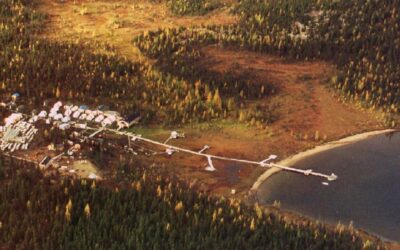This opinion piece originally appeared in the Toronto Star.
There’s no denying it: the Earth is in a rough spot right now. The impacts of climate change are unignorable, and every year, it seems like they’re getting worse. Producing sustained, global efforts to reduce emissions has proved a tough nut to crack.
But despite the planetary doom and gloom, I’m actually feeling pretty hopeful. Why?
Big nutcrackers.
One of the things that gives me enormous hope is that rather than being defeated by the scale of the problems at hand, the global community has often – not always – but often, seriously cranked up the scale of the solutions.
In response to the worsening loss of biodiversity, 190 nations recently agreed to protect 30% of the Earth’s surface by 2030. This is a stunning escalation of ambition, and a usefully giant nutcracker. It wasn’t that long ago, after all, that 12 percent was considered adequate. This “30 by 30” international commitment is now being enshrined in national and sub-national strategies the world over.
In the face of a growing climate crisis, the global commitment to Net Zero greenhouse gas emissions by 2050 is another example of an audacious concept that has accelerated quickly. The UK became the first country to legally commit to Net Zero in 2019 (its previous target was an 80% reduction by 2050) and the concept has snowballed from there. As of today, more than 70 countries covering 76% of global emissions and 90% of global GDP have formally committed to Net Zero by 2050. And the concept is suffusing levels of government and society everywhere.
Net Zero by 2050 has lots of different components, many of which are impressive in their own right. As one example, an increasing number of countries, including Canada, are making commitments to ensure a Net Zero energy system. Accelerating the energy transition through low-emissions electricity is how a lot of countries, including Canada, is cracking this particular nut. Here at home, decarbonizing our electricity is driving down emissions, and recent numbers from the federal government prove it.
Other recent environmental announcements with previously unthinkable levels of ambition include last month’s largest-ever investment in the clean-up of the Great Lakes and, of course, the most consequential US effort to limit global warming to date —the massive Inflation Reduction Act. US $391 billion in spending on energy and climate change? Pretty big nutcracker.
There are, of course, many setbacks along the way – such as Europe chickening out of overhauling its signature toxic chemical legislation – and many big problems that still lack a corresponding solution. One example of a nut in search of a cracker is the escalating danger of plastic pollution, which recent scientific evidence is now pointing to as a source of danger for human health. In a couple of months, the nations of the world will gather in Paris for the second round of negotiations for a new global treaty to solve the plastic pollution crisis. Much is at stake, and nothing is yet determined.
There’s a big difference, of course, between talking the talk and walking the walk. Whether it’s “30 by 30” or “Net Zero by 2050” there remains enormous hard work ahead to turn commitments into policy, and then see results. But the first step in solving any big problem is to have the audacity to match it with an even bigger solution.
The world is doing just that. And this should be the cause of some Earth Day hope and optimism for the road ahead.








